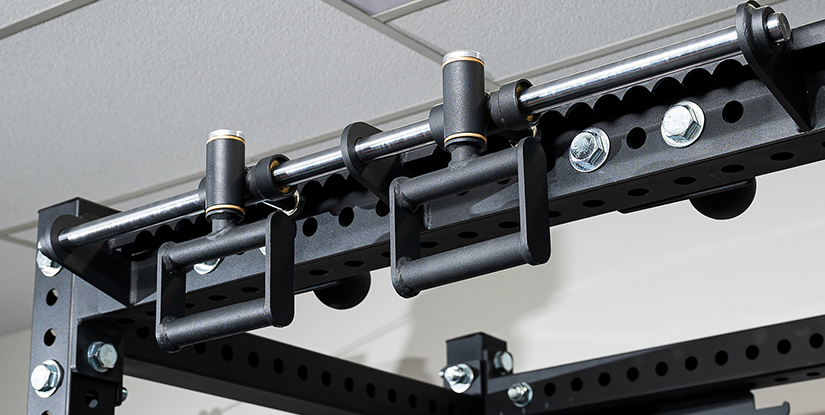Gym Accessories for Men: Essential Gear for Performance & Recovery

Essential Gym Accessories for Men
Creating an efficient, safe, and comfortable training routine goes beyond selecting the right program. The right gym accessories enhance performance, protect joints, support recovery, and improve hygiene. This guide covers essential accessories for men, selection criteria, practical tips, and maintenance best practices so you can invest in gear that delivers real value.
Core Accessories and Their Benefits
- Weightlifting belt — Improves intra-abdominal pressure for heavy compound lifts, supports the lower back, and helps maintain form during squats and deadlifts.
- Wrist wraps and straps — Wrist wraps stabilize joints in pressing movements; lifting straps improve grip for heavy pulls and rows.
- Training gloves or grips — Protect palms, reduce calluses, and enhance grip comfort during high-rep sessions.
- Knee sleeves and sleeves for joints — Provide compression, warmth, and proprioceptive feedback; useful for squats and knee-intensive work.
- Resistance bands — Versatile for warm-ups, mobility drills, progressive resistance, and at-home work when equipment is limited.
- Foam roller and massage tools — Aid myofascial release, improve mobility, accelerate recovery, and reduce soreness.
- Shaker bottle and hydration gear — Support nutrition timing and hydration; durable bottles with secure lids reduce spills.
- Quality earbuds or headphones — Durable, sweat-resistant audio keeps focus and motivation in the gym.
- Gym bag and organization — Separate wet and dry compartments, reinforced bottoms, and easy-access pockets simplify gym logistics.
- Towel and hygiene kit — Quick-dry towels, disinfectant wipes, and deodorant preserve shared equipment cleanliness and personal comfort.
How to Choose Based on Training Goals
Different goals require different accessories. Prioritize according to your primary objective.
- Strength and power — Invest in a sturdy weightlifting belt, durable lifting straps, and chalk if allowed. Prioritize solid construction and proper fit.
- Hypertrophy — Gloves or grips for high-rep sets, knee sleeves for heavy leg days, and a reliable shaker for intra-workout nutrition.
- Endurance and cardio — Lightweight, breathable gear: sweat-resistant earbuds, a compact towel, and a high-capacity water bottle.
- Mobility and recovery — Foam rollers, massage balls, resistance bands for dynamic stretching, and cold/hot therapy tools for recovery.
Materials, Fit, and Durability
Select materials and construction that match intensity. Leather belts provide longevity and superior support for heavy lifters; nylon belts are more flexible and lighter for general training. Neoprene sleeves offer compression and warmth, while elastic wrist wraps allow adjustability. Check seams, stitching, and hardware; reinforced stitching and robust buckles or Velcro closures extend lifespan.
Sizing and Fit Checklist
- Measure for belts at the level of your lifting belt placement — not at your waistline.
- Try wrist wraps and straps to ensure they lock without restricting blood flow.
- Test knee sleeves for snug compression without pinching; they should slide on and stay put during movement.
- Choose gloves or grips that maintain tactile feel while preventing slippage.
Maintenance and Hygiene
Extend gear life with simple routines: air out damp items after each session, wash towels and soft fabrics regularly, and treat leather with appropriate conditioners. Replace worn straps, Velcro, or padding to avoid equipment failure. Clean shared-contact surfaces and use a small hygiene kit to protect both you and other gym users.
Budgeting and Prioritization
Start with a shortlist: belt, wrist support, and a reliable pair of trainers. Add recovery tools and convenience items as training intensity grows. Aim for a balance between cost and build quality—buy well-made essentials first, then expand with specialized tools.
Practical Tips for Smart Purchases
- Read reviews focused on longevity and real-world usage, not just initial aesthetics.
- Choose gear from reputable brands with clear return policies and size guides.
- Test for comfort: uncomfortable accessories usually get abandoned.
- Consider multi-use items like resistance bands that serve warm-up, mobility, and resistance training roles.
Top Categories to Consider
- Support and protection: belts, wraps, sleeves.
- Grip enhancement: chalk, straps, gloves.
- Recovery and mobility: foam rollers, massage tools, bands.
- Convenience: shaker bottles, bags, towels, earbuds.
FAQs
- Q: Do I need a lifting belt?
A: Not for all lifters; it's essential for heavy compound lifts or maximal attempts. - Q: How often replace wrist wraps?
A: Replace when stitching frays or Velcro loses hold; typically 1–3 years depending on use. - Q: Are knee sleeves necessary?
A: They aid compression and warmth for heavier leg work but aren't mandatory for light training. - Q: Can resistance bands replace weights?
A: They complement weights and are effective for many movements but have different loading characteristics. - Q: How to clean foam rollers?
A: Wipe with mild soap and water; air-dry completely to prevent odor. - Q: Should I use lifting straps permanently?
A: Use them selectively; avoid over-reliance to maintain grip strength. - Q: Are gloves better than chalk?
A: Gloves protect skin; chalk improves direct grip. Choice depends on personal preference and gym rules. - Q: What material is best for belts?
A: Leather for heavy lifting, Nylon for general training and comfort. - Q: How to carry gear efficiently?
A: Use a gym bag with separate compartments and waterproof pockets for wet items.

